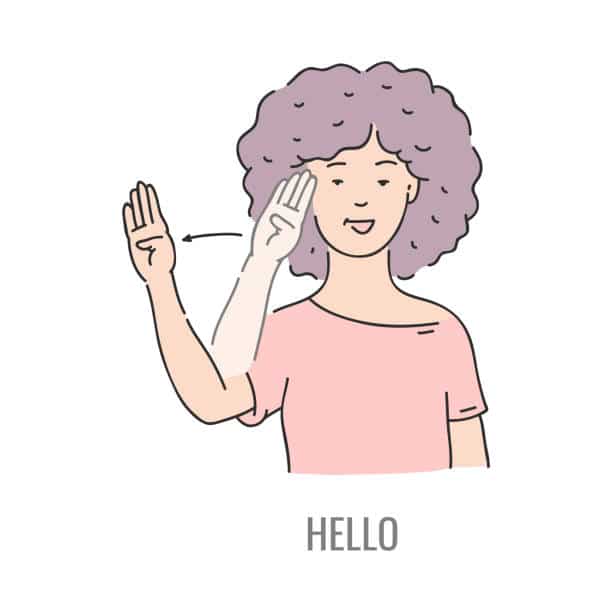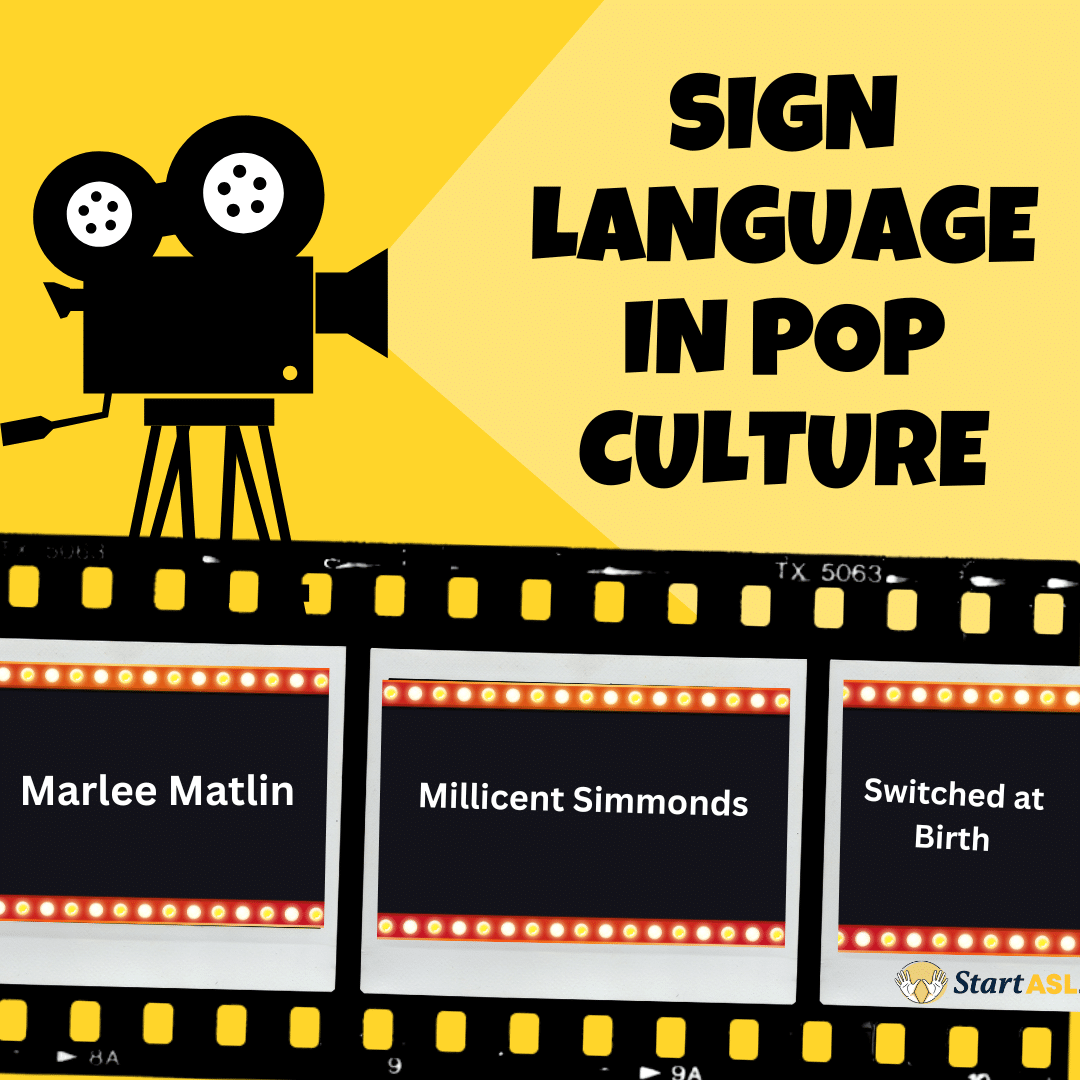
Where do you start when you want to learn American Sign Language (ASL)?
- by Katelyn Cheng
- No Comments

When you make the decision to learn ASL, your first though is probably to jump online and find out where you can learn. Some people use social media, and others look for a course to get them through more than just how to say hello. American Sign Language (ASL) is one of a kind. It is a beautiful visual language. There are so many reasons why you should learn American Sign Language.
- It is a beautiful and visual language.
- You can communicate using ASL no matter where you are, in loud or quiet places. Loud places like concerts or clubs and quiet places like the library or during a play.
- You can communicate from afar or through windows.
- You can communicate with Deaf people.
- It is another foreign language to know.
It is definitely worth learning. It’s a beautiful language to learn and fun. ASL is unique since it cannot be written. There are a lot of benefits when it comes to signing and it bridges the gap between the hearing and Deaf communities. Babies and people with speech disabilities also benefit from learning ASL. ASL is especially awesome and beautiful in the arts–look at DeafWest.org for example.
Remember, it is not just about brushing up on your ASL skills, but also to keep in mind that ASL is not just a language. It is a language that has its own grammar and sentence structure, slangs and phrases, as well as culture and history. You can learn ASL again by taking courses with Start ASL.
Start ASL offers our The Complete ASL 1-4 Online Course, the Start ASL Offline Course, and Options for Teachers, Schools, and Homeschoolers.
Here are the Top 10 & 20 signs to help you refresh your memories.
Tip: If the video seems fast, there is a list of videos for each sign. Once you feel comfortable, come back to the video to review what you’ve learned.
TOP TEN SIGNS
- HELLO
- HOW ARE YOU?
- NICE TO MEET YOU
- WHAT YOUR NAME?
- MY NAME IS KATELYN
- THANK YOU
- DEAF
- HEARING
- HARD OF HEARING
- GOOD-BYE
TOP TWENTY FIVE SIGNS
- HELLO
- HOW ARE YOU?
- NICE TO MEET YOU
- WHAT YOUR NAME?
- MY NAME IS KATELYN
- THANK YOU
- DEAF
- HEARING
- HARD OF HEARING
- GOOD-BYE
- SEE YOU LATER
- SEE YOU TOMORROW
- MY SIGN NAME IS…
- PLEASE
- SORRY
- GOOD
- FINE
- BAD
- EXCUSE ME
- GOOD MORNING
- GOOD NIGHT
- HUNGRY
- TIRED
- HELP
- BUSY
Here are a couple tips to keep in mind when learning American Sign Language. First of all, ASL has 5 parameters and they are: handshape, palm orientation, location, movement, and non-manual markers/signals.
Handshape: This refers to the hand configuration which is used in the beginning of any word production in ASL. There are common handshapes such as 1 and D, 2 and V, 9 and F that are usually misinterpreted; therefore people will use the context to help them better interpret the sign that has the same handshape. Here are three examples of handshapes: “c” as in class, open “a” as in behind, bent “v” as in squirrel.
Palm Orientation: This refers to the direction in which the hand is turned to produce a sign. Palm orientation includes palm up, palm down, palm right, palm left, palm outward (away from you), palm inward (palm facing you). Here some examples of signs with different palm orientation: school, clean, paper.
Location: This refers to the location of where the signs are produced. The general physical parameters (signing space) for sign language production are approximately four inches above the head, elbow room as with hands on the waist, and about four inches below the belly button or belt buckle. The 3 example signs of location that changes meaning are summer, ugly, and dry. There are signs that remain the same location but have different handshapes such as restaurant and single.
Movement: This refers to changing of the location of the hands when signing. For example, when signing give, you can sign give away from you towards the person you are signing with. This indicates that I am giving you something. On the other hand, if I am signing give away from you towards me, then that indicates you are giving me something. Movement can also refer to the frequency of an action. For example, again, if signed repeatedly multiple times, then this means “over and over”.
Non-Manual Markers/Signals (NMM or NMS): These are signals or gestures done without the use of hands. The signals or gestures is demonstrated mostly from the shoulders, head, and face to relay a message. Specific NMM or NMS alter the meaning of a sign. Facial expressions or body language such as head nods, shakes, eyebrows, nose, eyes, and lips fall under this category and carry a meaning that are attached to a sign.
The second tip to when learning ASL is that some handshapes movement can come off the wrong way or convey a different meaning, so be careful and learn the correct way to sign a word. This is usually common for beginner signers and that is okay, but it is good to keep in mind!
Learning ASL is not just learning by the books. A lot of it comes from social interactions with other Deaf people. Start ASL also has a list of Deaf events you can attend to. Social interactions give you the real world use of ASL and what I mean by that is you will learn how people use slangs, talk with each other, use of behavioral movements and facial expressions. In addition, by immersing yourself at Deaf socials, it is where you can easily practice your sign language. Start ASL promotes many Deaf events from all over US, you can find the events here.
Sign language is not hard, it takes time, patience, and practice. It can be frustrating at first, but really it is a lot of muscle memory and once you sign again and again, it becomes easier.
Here are tips when it comes to learning ASL.
- Similarly to any other languages, learning ASL takes time to learn. It may be easy for some people and more challenging for others. It is a matter of practicing and being brave to attend Deaf socials.
- Before you attend Deaf socials, be sure to read and familiarize yourself about the Deaf community and Deaf culture. This information is important because when you attend Deaf socials, there are things that you can and cannot do, so it would be good to know ahead of time. Of course, you will learn a lot more when you actually attend socials.
- Understand the cultural differences but also recognize the common body language and behavior. For instance, D/deaf people are very direct and expressive, so it can come off a bit awkward being around an expressive 18+ type of talk, but that is normal in the Deaf community.
- When you attend Deaf socials, even if you are a beginner and barely know signs, it is respectful to turn your voice off when possible.
- Attend Deaf socials, meet D/deaf friends, and hang out with them. That is the only way you will improve your signing.
- Also, having a D/deaf friend is beneficial because this will push you really use your signing and help you understand the life of a D/deaf person, the culture, and the community.
- Even if you do not know a lot, you create ASL cover videos. You can simply go on Youtube to learn someone signing to a song, and film yourself signing to the song or poem or joke or story. You will be surprise how far you have improved with your signing when you become fluent. This is also a fun way to utilize your signing and stay engaged with your learning process.
- Remember that facial expressions and body language are crucial.
- There are signs that have reasons behind them.
- It is okay to finger spell if you do not know the sign.
- Be mindful that there are multiple signs for a single word. So, if you learned the sign one way and someone else teaches you another sign for that same word, it could be based on where the person is from because there is such thing as regional signs.
- Learn to sign the phrase “How do I sign … ?”
- Learn the 5 parameters of a sign. Then you can use those parameters to write a definition for a sign to remember them. For example, HAPPY (write the parameters for this one).
- Think of one sign that you use to help you with noun and verb movement. My one sign I use all the time is CHAIR and SIT. CHAIR has two movements, while SIT is the action to sit down. For me this helped to translate to other noun and verb signs.
- When you are learning signs, if there is an opposite, learn one version, then bring in the second sign to remember it. One example o-f this is mom and dad. Mom and female signs are near the chin, while dad and male assigned signs like brother start at the forehead.
- Fingerspelling is rough for non-native signers. Practice your fingerspelling clear and not always for speed.
- Practice signing into a mirror or camera. A camera is nice because you can watch it later to make sure the signs were executed correctly.
- D/deaf people are very animated and outgoing, so don’t be shy to join the conversation and converse with D/deaf people.
- It is okay to be nervous at first. D/deaf people are very friendly and patient.
- Be mindful that D/deaf people cannot hear, so do not try calling them. Do either go up to them, tap them on the shoulder, or find other appropriate ways to get their attention.
- Do not try to be a perfect signer. It you make a mistake, brush it off. D/deaf people are open to correcting you, so you know the correct sign for next time.
- Be open to corrections so you can become a better signer.
- When signing, relax.
- Be focused and maintain constant eye contact with the person you are talking to. It is considered rude to look at your phone, glance away, or walk away while the D/deaf person is talking to you. It shows that you are not paying attention or do not care about conversation or the person you are speaking with.
- Don’t worry about not understanding everything. You will pick up as you go. It takes time and patiences to absorb new signs especially if you are seeing the signs in real life conversations.
- It is okay to ask the person to slow down their signing or finger spelling if they are too fast.
- Don’t get discouraged if one day you are doing well but then the next day you are not doing so well. It takes time to learn a new language.
- Many D/deaf people will ask you why are you learning ASL, so think of a good answer that inspired you to learn ASL. It can just simply be that, “ASL is a beautiful language and you want to learn it.”
- Set goals for yourself and keep track of your progress. This will help you see how you are doing in your learning process.










